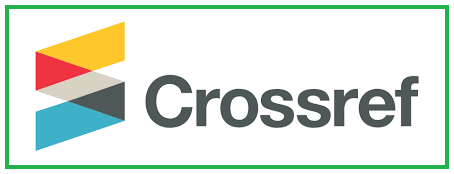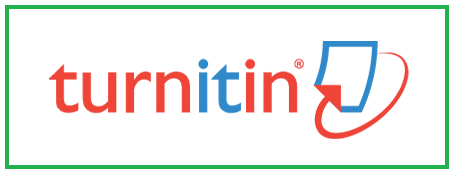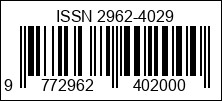CHILD SAFEGUARDING POLICY IN LEMBAGA PENYELENGGARA KESEJAHTERAAN SOSIAL (LPKS)
Keywords:
Child Protection, Safeguarding Policy, Social RehabilitationAbstract
Lembaga Penyelenggaraan Kesejahteraan Sosial (LPKS) is an institution that organizes social rehabilitation programs for children in conflict with the law. LPKS applies a social work and child rights approach to achieve children's social functioning, growth, and development in a safe environment while participating in social rehabilitation programs. LPKS chose the Child Safeguarding Policy (CSP) to uphold a safe environment. CSP is a system or collection of activities, procedures, documents, and responses in addressing child protection issues in the context of the institution. It covers a range of activities from prevention to response to child abuse issues. This article aims to describe the process of the Social Welfare Institution in implementing the Child Protection Policy. This article is a qualitative article based on the framework of constructivism and interpretivism, using ethnographic methods. Its selection is based on the benefits of collecting information through involvement in implementation, participatory observation, field notes, and report documents. The process of LPKS in implementing the Child Protection Policy implies (1) the role of leaders in demonstrating the commitment of the institution to protecting children from the risk of abuse, (2) the Child Protection Policy must be carried out integrally through awareness, prevention, reporting, and response to child abuse issues, (3) the Protection Policy must be carried out in an integrated manner.
Downloads
References
Sofian, A. (2018). Child Safeguarding Policy Upaya Penanggulangan Kekerasan Pada Anak. Diakses https://business-law.binus.ac.id/2018/03/30/child-safeguarding-policy-upaya-penanggulangan-kekerasan-pada-anak/.
Atkinson, P and Hammersley, M., 2007, Ethnography Principles in practice. Third edition. New York: Routledge.
Australian Human Rights Commission ,2017, National Statement of Principles for Child Safe Organisations (Australia: Australian Human Rights Commission).
Bromfield, L. M., 2005, Chronic child maltreatment in an Australian statutory child protection sample (Unpublished Dissertation). Deakin University, Geelong.
Lamont, A., Bromfield, L., Horsfall, B., & Parker, R. (2010). Issues for the safety and wellbeing of children in families with multiple and complex problems: the co-occurrence of domestic violence, parental substance misuse, and mental health problemsNCPC issues. Australian Institute of Family Studies.
BRSAMPK Toddopuli. (2019). Laporan Reviu Kasus Anak BRSAMPK Toddopuli 2019. Kementerian Sosial RI, Indonesia.
BRSAMPK Toddopuli. (2020). Hasil Pemeriksaan Psikologis Klinis Anak 2020. Kementerian Sosial RI, Indonesia.
CDC. (2021). Violence Prevention. Diakses https://www.cdc.gov/violenceprevention/pdf/can/CAN-factsheet_508.pdf.
CFCA. (2014) Effects of child abuse and neglect for children and adolescents, CFCA Resource Sheet. Diakses https://aifs.gov.au/cfca/publications/effects-child-abuse-and-neglect-children-and-adolescents.
Children Protection Act 2014 (INA).
Child Criminal Justice System Law 2012 (INA).
Child Welfare Information Gateaway. (2019) Long-Term Consequences of Child Abuse and Neglect. Diakses https://www.childwelfare.gov/pubPDFs/long_term_consequences.pdf.
Fortson, B. L., Klevens, J., Merrick, M. T., Gilbert, L. K., & Alexander, S. P. (2016). Preventing child abuse and neglect: A technical package for policy, norm, and programmatic activities.
Gray, D. E. (2021). Doing research in the real world. SAGE Publication.
Patty, J. M. (2020). Tindak kekerasan terhadap anak di lingkungan satuan pendidikan dan peranan keluarga sebagai upaya non-penal dalam pencegahan. Jurnal Belo, 5(2), 115-129.
Kompas.com. (2017). Seorang Anak Balita Meninggal Diduga Akibat Kekerasan di Panti Asuhan’, viewed in January 2021. Diakses https://regional.kompas.com/read/2017/01/28/19513941/seorang.anak.balita.meninggal.diduga.akibat.kekerasan.di.panti.asuhan.
Newberger, E. H. (1990). Child Physical Abuse: Definition, Prevalence, and Prevention. Mark Rosenberg and Mary Ann Fenley,(eds) Violence: A Public Health Approach.
MayoClinic. (2018). Child Abuse. Diakses https://www.mayoclinic.org/diseases-conditions/child-abuse/symptoms-causes/syc-20370864.
Teja, M. (2014). Perlindungan terhadap anak terlantar di panti asuhan. Info Singkat Kesejahteraan Sosial, 6(5), 9-12.
Naidoo, L. (2012). Ethnography: An introduction to definition and method. An ethnography of global landscapes and corridors, 10, 39248.
National Center for Biotechnology Information (2014) Consequences of child abuse and neglect. Diakses https://www.ncbi.nlm.nih.gov/books/NBK195987/ Consequences of Child Abuse and Neglect.
OHH Ditjen Rehsos. (2020). Komitmen Kemensos Bantu Anak-anak di Kondisi Covid 19 melalui Progresa, Diakses https://kemensos.go.id/komitmen-kemensos-bantu-anak-anak-di-kondisi-covid-19-melalui-progresa.
Plan International Organisation. (2019). Global Policy on Safeguarding Children and Young People. Diakses https://plan-international.org/publications/global-policy-safeguarding-children-and-young-people 2019.
Powell, Richard. (2014). Save the Children Child Safeguarding Policy. Save the Children.
Queensland Government. (2018). What is Child Abuse. Diakses https://www.qld.gov.au/community/getting-support-health-social-issue/support-victims-abuse/child-abuse/what-is-child-abuse/child-abuse-effects> .
Reachout. (2021). What is Child Abuse. Diakses https://au.reachout.com/articles/what-is-child-abuse.
Save the Children. (2020). Child Exploitation. Diakses https://resourcecentre.savethechildren.net/keyword/child-exploitation.
Praditama, S. (2016). Kekerasan terhadap anak dalam keluarga dalam perspektif fakta sosial. SOSIALITAS; Jurnal Ilmiah Pend. Sos Ant, 5(2).
Detrick, S., Abel, G., Berger, M., Delon, A., & Meek, R. (2008). Violence against children in conflict with the law. A Study on indicators and data collection in Belgium, England and Wales, France and the Netherlands. Defence for Children International.
Davies, S. G., & Robson, J. (2016). Juvenile (in) justice: children in conflict with the law in Indonesia. Asia-Pacific Journal on Human Rights and the Law, 17(1), 119-147.
Sinanan, A. N. (2015). Trauma and treatment of child sexual abuse. Journal of Trauma & Treatment, 4(24), 1-5.
Spradley, J. P. (2016). The ethnographic interview. Waveland Press.
Suyanto, B., & Prasetyo, R. A. (2020). Acts of Violence and Adaptation Mechanism of Children in Conflict with the Law in Juvenile Detention Center. Talent Development & Excellence, 12(1).
Kurniawan, T., Y. (2011). Disiksa, 20 Anak Panti Melapor ke Polisi. Diakses https://nasional.tempo.co/read/346123/disiksa-20-anak-panti-melapor-ke-polisi.
The Social Ministerial Decree 107 of 2019 on LPKS and RPS
The Social Minister Regulation 16 of 2020 on ATENSI
The Social Minister Regulation 1 of 2020 on Pengasuhan Anak
Thoresen, S., Myhre, M., Wentzel-Larsen, T., Aakvaag, H. F., & Hjemdal, O. K. (2015). Violence against children, later victimisation, and mental health: a cross-sectional study of the general Norwegian population. European journal of psychotraumatology, 6(1), 26259.
UNICEF. (2014). Violence against Children in East Asia and the Pacific: A Regional Review and Synthesis of Findings. Strengthening Child Protection Systems Series: No. 4. Diakses https://www.unicef.org/eap/reports/violence-against-children-east-asia-and-pacific.
WHO. (2006). Preventing child maltreatment: A guide to taking action and generating evidence. Geneva: WHO. Diakses www.who.int/violence_injury_prevention/publications/violence/child_maltreatment/en.
WHO. (2014). Global Status Report on Violence Prevention 2014. Diakses https://www.who.int/publications/i/item/9789241564793.
Robertson, S. (2002). Introducing qualitative research in psychology: Adventures in theory and method. Open University, Berksire.
Cannon, Y., & Hsi, A. (2016). Disrupting the path from childhood trauma to juvenile justice: An upstream health and justice approach. Fordham Urb. LJ, 43, 425.
Yayasan Sayangi Tunas Cilik, 2019, Kebijakan Keselamatan Anak, YSTC: Jakarta
Young, S., Greer, B., & Church, R. (2017). Juvenile delinquency, welfare, justice and therapeutic interventions: a global perspective. BJPsych bulletin, 41(1), 21-29.
Daton, Z., D. (2020). Rumah Aman yang tak Aman untuk korban prostitusi online. Diakses https://regional.kompas.com/read/2020/09/19/11400061/rumah-aman-yang-tak-aman-untuk-korban-prostitusi-online?page.
Downloads
Published
How to Cite
Issue
Section
License
Copyright (c) 2024 Bambang Tri Hartono

This work is licensed under a Creative Commons Attribution-ShareAlike 4.0 International License.













